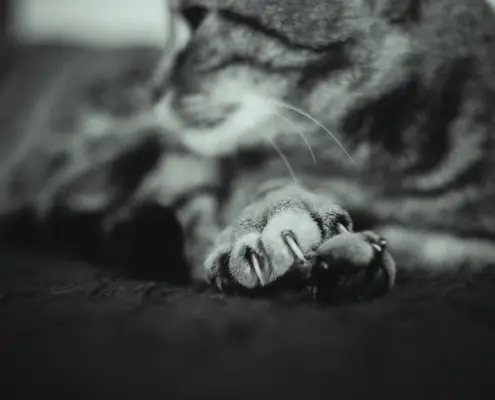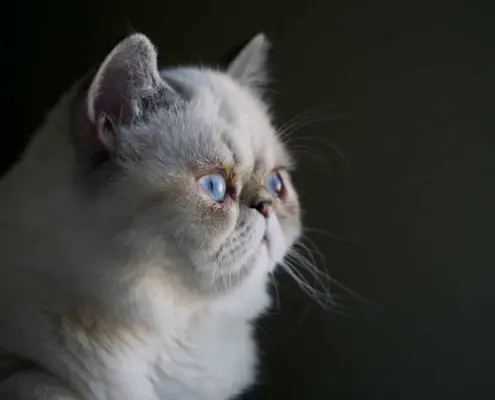
Cats have long been known for their hunting skills and predatory instincts. Whether it’s the domestic cat lounging in your living room or a wild cat prowling in the jungle, their innate ability to hunt and capture prey is truly fascinating. Understanding what makes cats predatory can give us valuable insights into their behavior and help us provide better care for our feline friends.
The evolution of hunting instincts in cats
The predatory behavior of cats can be traced back to their wild ancestors. Over thousands of years, cats have evolved to become efficient hunters, finely tuned to stalk and capture their prey. The need for survival in the wild led to the development of sharp claws, keen senses, and a muscular body. These traits enabled cats to excel in hunting and ensured their place on the top of the food chain.
Anatomy and physical traits that aid in hunting
Cats possess a range of physical traits that make them formidable predators. Their sharp retractable claws allow them to silently approach their prey and make quick, precise strikes. The flexible spine and powerful hind legs provide them with the agility and speed needed to pounce and capture their target. In addition, their keen senses of hearing, sight, and smell give them an advantage when it comes to detecting and tracking prey.
Understanding the hunting behavior of cats
To truly understand what makes cats predatory, we must delve into their hunting behavior. Cats are crepuscular hunters, meaning they are most active during dawn and dusk. They rely on their exceptional vision to spot movement and their sensitive hearing to locate prey. Once they have identified a target, they enter a stealth mode, moving slowly and silently to get as close as possible. Finally, they pounce with lightning speed, using their sharp claws and teeth to secure their catch.
Hunting techniques used by cats
Cats employ a variety of hunting techniques depending on the type of prey they are pursuing. For small mammals, they use a combination of stalking, chasing, and capturing techniques. They may also employ the “play and pounce” technique, simulating the movements of their prey before making a final strike. When hunting birds, cats may exhibit a different set of techniques, such as climbing trees and leaping into the air to catch their prey mid-flight.
The role of play in developing hunting skills
Play is an essential component in the development of a cat’s hunting skills. Kittens engage in play-fighting and mock hunting with their littermates, honing their coordination, reflexes, and predatory instincts. Through play, they learn the crucial skills of stalking, pouncing, and capturing, which they will later utilize in real hunting scenarios. As responsible cat owners, providing opportunities for play, such as interactive toys and simulated prey, can help satisfy their natural hunting instincts.
How hunting instincts are displayed in domestic cats
Even though domestic cats may not have the same hunting pressures as their wild counterparts, their predatory nature still shines through. They may display behaviors such as stalking and pouncing on toys, chasing moving objects, or even bringing small prey back to their owners as a “gift.” These behaviors are a testament to their strong hunting instincts and should be embraced rather than discouraged.
The impact of hunting on cat behavior and well-being
Hunting plays a crucial role in a cat’s physical and mental well-being. Engaging in hunting-like activities helps them release pent-up energy, relieve stress, and maintain a healthy weight. It also provides mental stimulation and prevents boredom, which can lead to behavioral issues. However, for indoor cats, the lack of natural hunting opportunities can pose a challenge. It is essential for cat owners to provide environmental enrichment, such as puzzle feeders and interactive toys, to simulate hunting and keep their feline companions mentally and physically engaged.
Encouraging natural hunting behaviors in indoor cats
Creating a stimulating environment that encourages natural hunting behaviors is vital for the well-being of indoor cats. Designating areas for climbing and providing scratching posts can mimic the experience of climbing trees and sharpening claws in the wild. Interactive toys, such as feather wands or laser pointers, can simulate prey movement and engage their hunting instincts. Additionally, introducing puzzle feeders or hiding treats around the house can provide mental stimulation and encourage cats to use their problem-solving skills.
Embracing and understanding a cat’s predatory nature
Decoding the fascinating traits that make cats predatory allows us to better understand and appreciate our feline companions. Recognizing their hunting instincts and providing opportunities for play and mental stimulation is crucial for their overall well-being. By embracing their natural predatory nature, we can create an environment that satisfies their instincts and helps them lead happy, fulfilled lives.
If you enjoyed my article, I would appreciate you sharing it with your network.

Sima Ndlebe
Sima writes for CatBuzz. He is interested in Cats, Health and Fitness, and Entrepreneurship.
Published: 5 December 2023



